Explore the sharpest view of the universe with the EVN
The European VLBI Network organizes a series of talks focusing on the capabilities of Very Long Baseline Interferometry (VLBI) and its significant contributions to different astronomical fields. These seminars cover various science topics with different speakers and provide an insightful introduction to cutting-edge research designed for the wider astronomical community.
How to Join
Join via Zoom (Meeting ID: 876 4980 9023) or watch it on YouTube, in the JIVE/EVN Channel Streaming.
Important Notes
• The seminar will run for approximately 40 minutes, followed by 20 minutes of questions and discussion.
• Can't make it at the scheduled time? The event will be recorded and later available on the JIVE/EVN YouTube channel for your convenience.
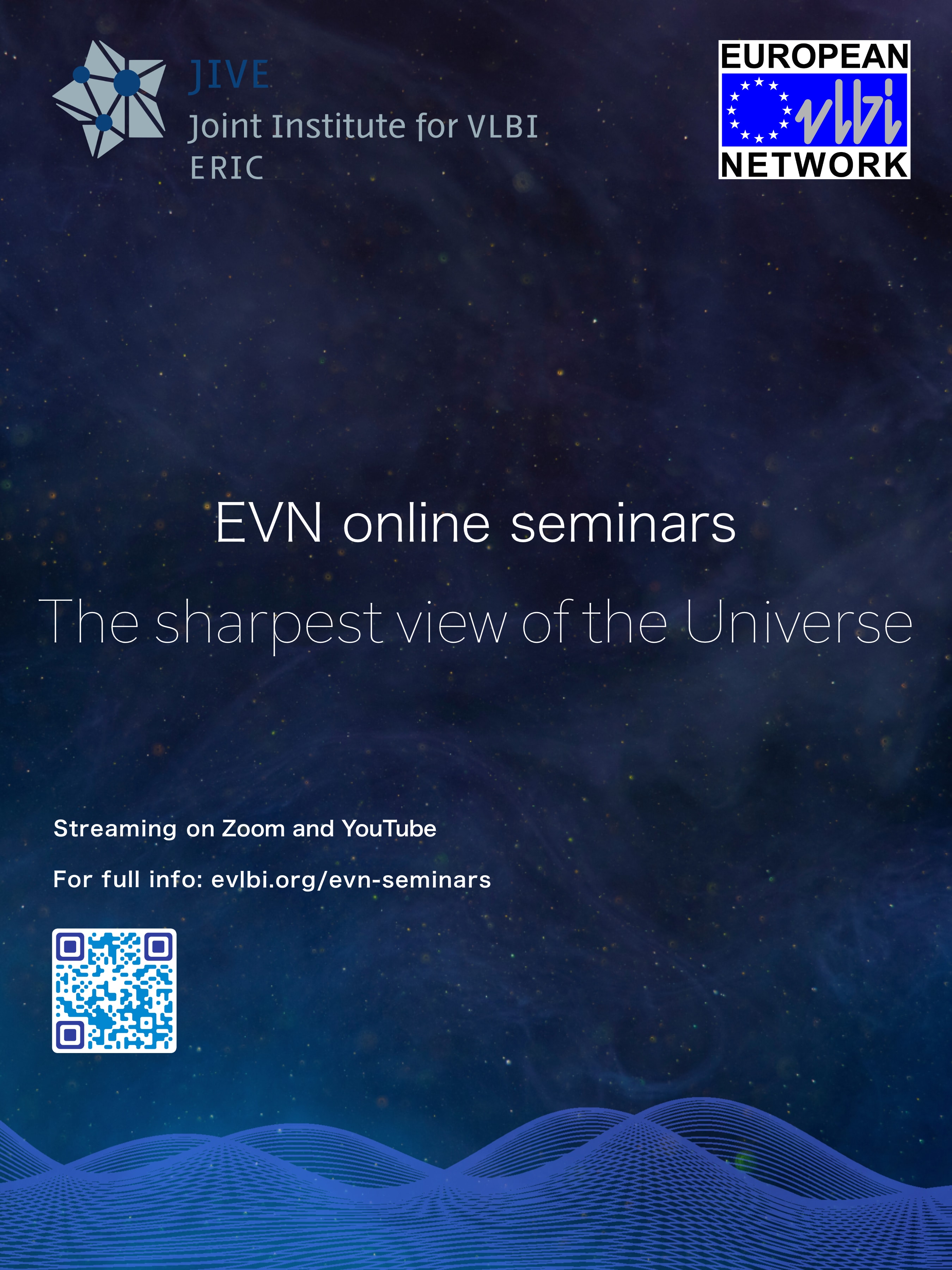
Upcoming seminars
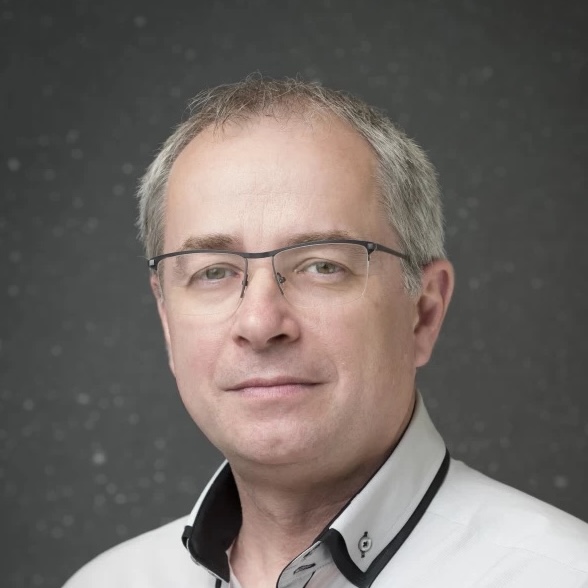
Friday 5 December 2025 11:00 CET 

Sandor Frey
Konkoly Observatory, HUN-REN Research Centre for Astronomy and Earth Sciences
VLBI and Gaia Astrometry in the Service of AGN Astrophysics
We are living in a golden age of astrometry when sub-milliarcsecond positional accuracies for a large number of extragalactic objects can be achieved in both the optical and radio wavebands. For many decades, very long baseline interferometry (VLBI) in the radio was the only method capable of providing such high-precision astrometric data for certain extragalactic objects, radio-loud active galactic nuclei (AGN). Recently, the European Space Agency's Gaia space mission has delivered massive amounts of accurate astrometric data for optically bright extragalactic sources. The synergy between these two techniques is unlocking new insights into AGN, allowing us to explore astrophysical phenomena such as jet physics, binary and dual supermassive black hole systems, and peculiar types of AGN. At the same time, it also contributes to improving the accuracy of celestial reference frames essential for most fields of astronomy, as well as spacecraft navigation and geodesy. In this talk, I will review some of the key results in this field, with an obvious bias towards studies I myself was involved in.
Watch the Past Seminars
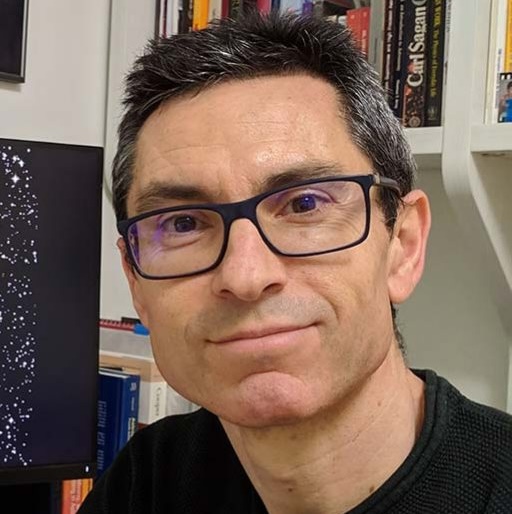
Arp 299 Reloaded: Supernova factories, normal AGNs and TDEs
Miguel Pérez-Torres
Instituto de Astrofísica de Andalucía - IAA-CSIC
Thursday 6 November 2025 11:00 CET
Arp 299, the nearby merging system at only 45 Mpc, has long been one of the brightest laboratories for studying the interplay between starburst and AGN activity. High-resolution VLBI campaigns, using mostly the EVN and deployed by our team over more than a decade, have revealed a “supernova factory” in the innermost 150 pc of Arp 299-A, uncovering dozens of compact radio sources consistent with core-collapse supernovae and remnants. Even more intriguingly, subsequent EVN observations serendipitously exposed the long-sought AGN at the heart of Arp 299-A, coexisting with the prolific starburst. Later, the system surprised us again: a radio jet launched by a tidal disruption event in Arp 299-B, one of the most spectacular cases ever caught, and the first ever to be resolved. Much like a sequel in The Matrix saga, each new observational “chapter” adds unexpected layers to a complex narrative where reality is richer than models anticipated. Arp 299 keeps challenging our understanding of how massive star formation, black-hole accretion, and feedback intertwine in LIRGs. With ongoing and future EVN monitoring, we are uncovering fresh “glitches in the system” that promise more surprises. Arp 299 is not merely a textbook merger; it is a living, evolving saga. And the story is far from over.

Exploring Multi-Messenger Astronomy by Current Observatories and Future Frontiers
Marica Branchesi
Gran Sasso Science Institute - INFN - INAF - ASI
Tuesday 6 May 2025 14:00 CEST
The talk will trace the remarkable journey of multi-messenger astronomy, from its early, groundbreaking detections to its transformative impact across multiple domains of physics. Though currently based on just a handful of observed events, these observations have revealed the immense potential of combining gravitational waves, electromagnetic signals, and neutrinos to probe the most extreme phenomena in the Universe. We will discuss how multi-messenger discoveries have advanced our understanding in areas ranging from relativistic astrophysics to nuclear physics, cosmology, and fundamental physics. We will highlight challenges and perspectives of current and next-generation observatories, which will turn rare and unique multi-messenger detections into routine, ushering in a new era of breakthrough discovery. Finally, we will describe how the Horizon Europe project ACME (Astrophysics Centre for Multimessenger studies in Europe) provides opportunities to access the major multi-messenger infrastructures, data analysis tools, and theoretical expertise to exploit multi-messenger observations and maximize their scientific impact.

Reinventing SETI: Innovative Approaches and the Power of Interferometers
Michael Garrett
Jodrell Bank Centre for Astrophysics - University of Manchester
Wednesday 5 February 2025 11:00 CET
The search for extraterrestrial intelligence (SETI) is entering an exciting new phase, with advanced instrumentation and innovative methodologies opening up new avenues to explore the universe for signs of intelligent life. At the University of Manchester, we are building a vibrant research group focused on cutting-edge topics that push the boundaries of traditional SETI paradigms. These include the search for technosignatures in the mm and sub-mm using ALMA data, investigations of possible Dyson Sphere candidates in our own and other galaxies, the identification of post-biological or machine-based signatures, and the simulation of Earth leakage radiation across the e-m spectrum. In this talk, I will outline some aspects of these new research directions, with an emphasis on the important role advanced interferometric arrays like the EVN & e-MERLIN can play in advancing SETI. Some recent contributions of the EVN & e-MERLIN will be outlined, together with a view of what they can also achieve in the future.
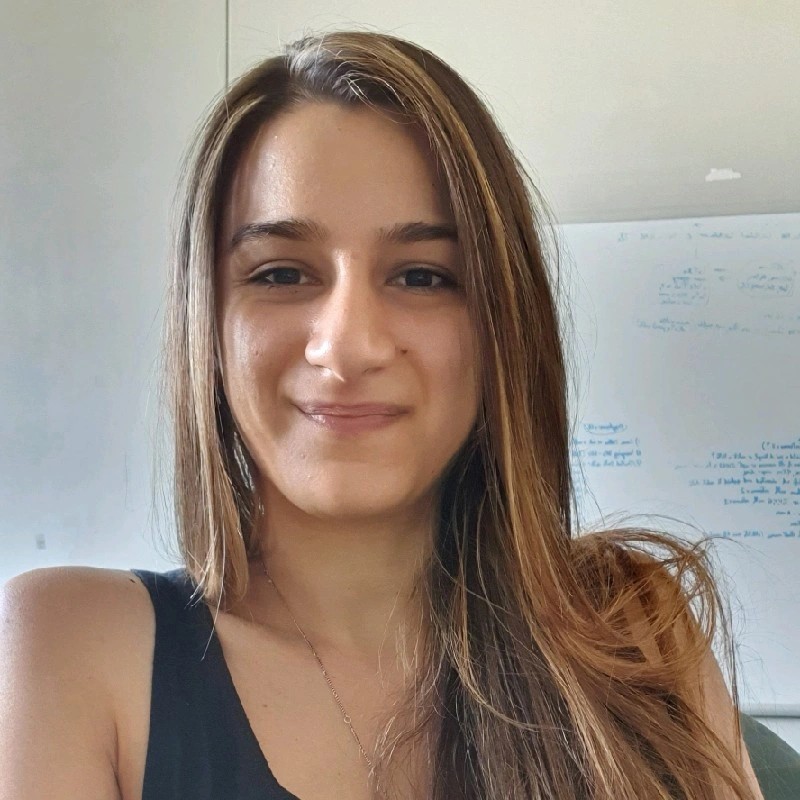
Lighting up Blazar Physics at the Spectrum’s Edge: VHE and VLBI Synergies
Cristina Nanci
INAF - Osservatorio di Astrofisica e Scienza dello Spazio
Thursday 12 December 2024 10:30 CET
Blazars, a class of active galactic nuclei with jets aligned towards Earth, offer a unique opportunity to study extreme astrophysical processes. Their powerful jets emit across the entire electromagnetic spectrum, providing data at all wavelengths for investigation. This presentation focuses on the synergy between Very High Energy (VHE) gamma-ray observatories and VLBI arrays—two distinct facilities operating at opposite ends of the spectrum—used to uncover the mechanisms driving the non-thermal emission of blazars. VHE observations probe the highest energy emissions from these objects, while VLBI provides high-resolution imaging of their jet structures. Together, they enable the study of particle acceleration processes, jet kinematics, and emission variability across multiple scales. I will introduce the basics of VHE observations and the tools employed at the two extremes of the spectrum. Finally, I will present studies showing how this combined approach deepens our understanding of blazar physics, from the origins of high-energy photons to the dynamic behaviour of jets in their most compact regions.

The EVN, JIVE and SKA through the decades – history, people and politics
Richard Schilizzi
Jodrell Bank Centre for Astrophysics - University of Manchester
Thursday 24 October 2024 10:30 CEST
I will give an overview of the historical development of these three pillars of global radio astronomy from their origins in the 1970s, 1980s and 1990s respectively to the current day. All three have travelled along different routes to maturity, the EVN as a global “grass roots” collaboration, JIVE as a European Research Infrastructure Consortium (ERIC), and SKA as an Inter-Governmental (Treaty) Organisation. I will also touch on key issues in these collaborations including the interactions between the radio astronomy community and their funding agency and government counterparts as well as the political environments at national, regional and global level that created the opportunities for new infrastructures.
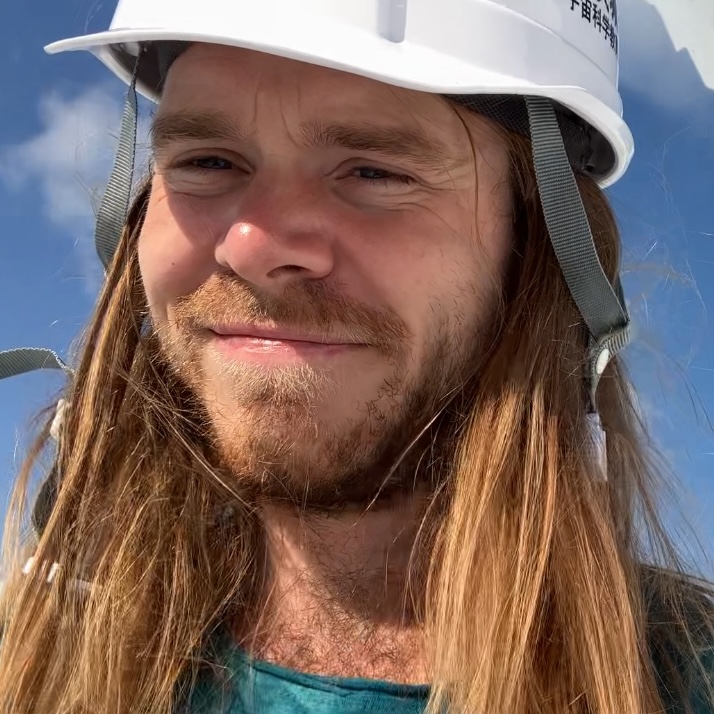
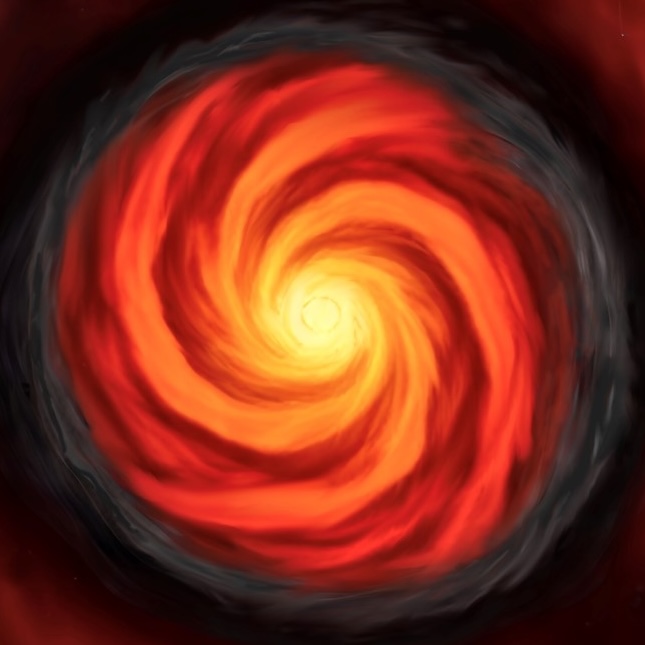
VLBI observations of maser flares
Ross Burns
RIKEN Cluster for Pioneering Research
Monday 17 June 2024 10:00 CEST
The recent years has seen an increased interest in maser flare behaviour, partially driven by the realisation that some of these events trace bursts of accretion in high-mass protostars. Radio frequency maser emission is bright and readily observable by common radio telescopes, enabling flux monitoring for a large number of sources and opening also the possibility of conducting VLBI observations. The Maser Monitoring Organisation routinely searches for, and performs follow-up observations of maser flares using VLBI and various other observational approaches. In this Seminar the findings of VLBI follow-up observations of maser flares will be presented, showing that an unexpectedly wide variety of causes for maser flaring behaviour must be considered.
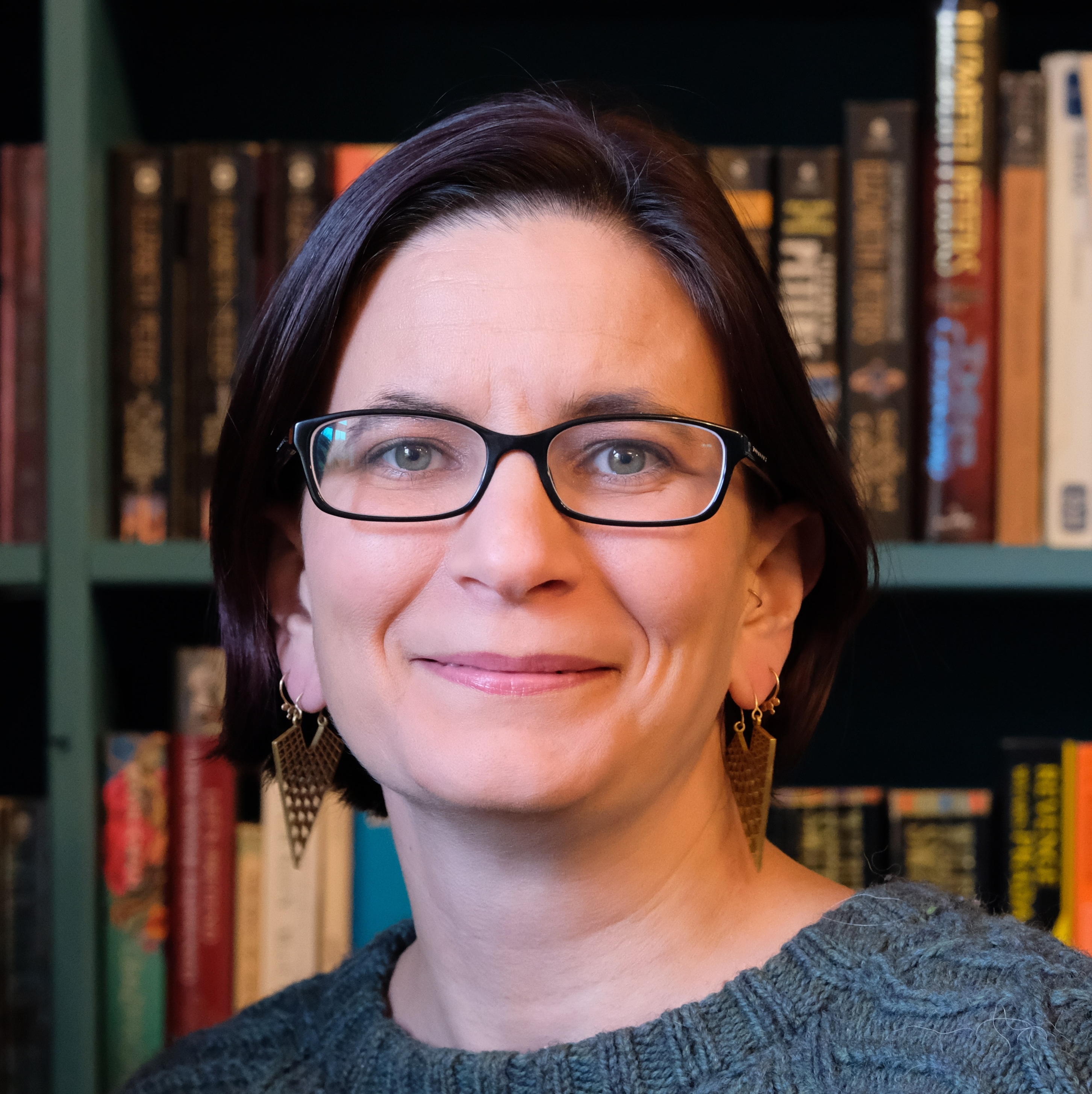

The highest resolution at the lowest radio frequencies: the LOFAR view of the radio sky
Leah Morabito
UKRI Future Leaders Fellow at Durham University
Thursday 2 May 2024 10:00 CEST
The LOw Frequency ARray (LOFAR) is a radio interferometer with antennas in nine European countries. Its geographic spread of almost 2,000km provides a large effective 'lens'. With this, we can make images with exquisite resolution at low radio frequencies. We do this by combining the signals from all these distant antennas, a technique known as very long baseline interferometry (VLBI). VLBI with LOFAR is very challenging. Over the past few years we have developed special calibration techniques for VLBI with LOFAR. These new techniques are now used for a wide variety of science cases which would not otherwise be possible. We have now extended these techniques to image large areas of the sky, which provides a unique combiantion of resolution and field of view. In this talk I will provide a general introduction to LOFAR, and an overview of the challenges in making high resolution images. I will walk through how we overcome these challenges and show examples of our breakthrough successes and recent science results. I will finish by providing an overview on current and future plans. These include a Northen sky survey which will have higher resolution than any previous wide-area radio survey.

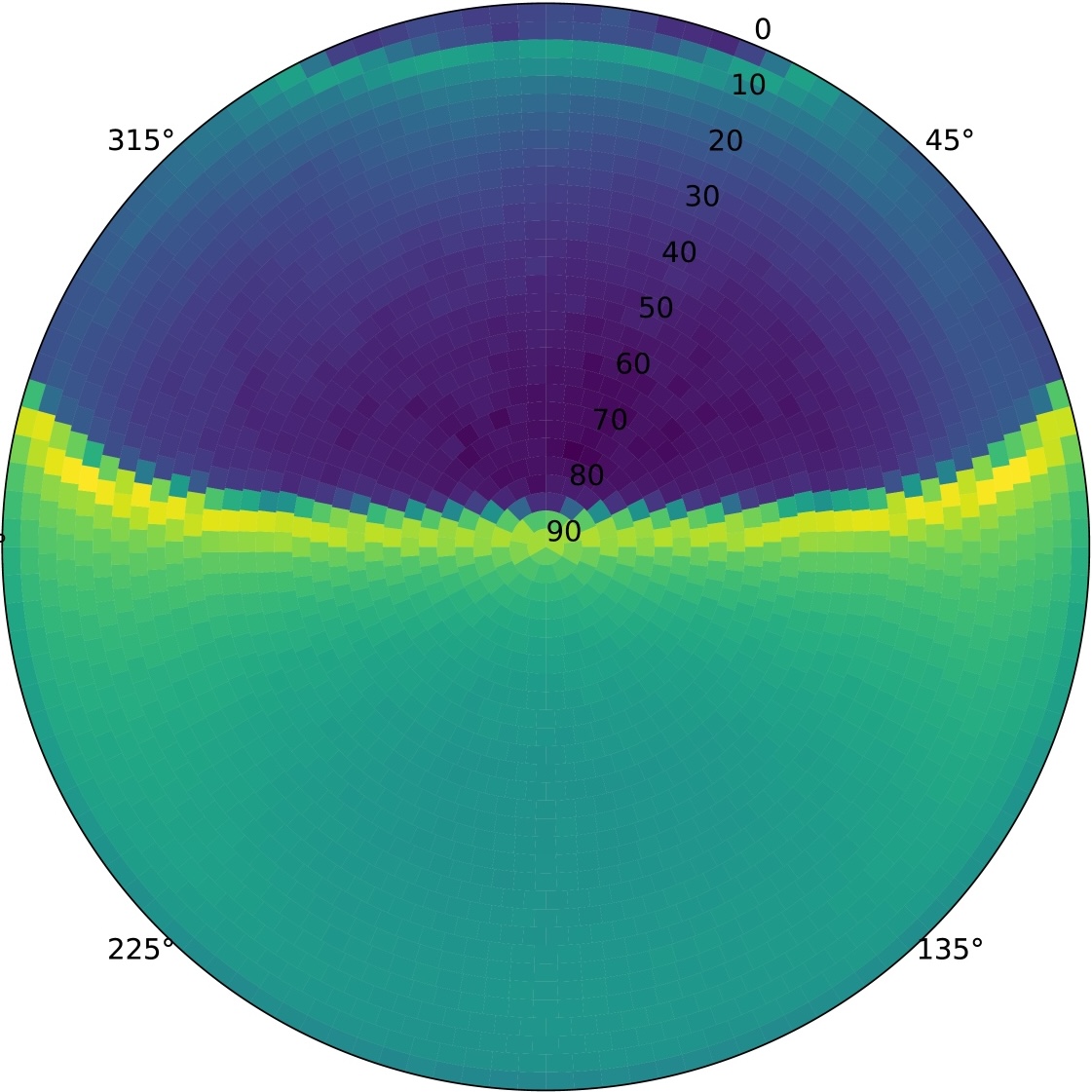
A new dark age for radio astronomy?
Benjamin Winkel
Max-Planck-Institut für Radioastronomie & CRAF
Tuesday 26 March 2024 14:00 CET
In recent years, the utilization of the radio spectrum has dramatically increased. Digital telecommunication applications, be it terrestrial cell-phone networks or new-space low-earth orbit satellite constellations, have not only acquired unprecedented amounts of spectrum but also use their frequencies everywhere on Earth. The consequences for radio astronomy and other scientific radio services are severe. A single cell-phone tower within hundreds of kilometers around a radio telescope can blind us and there is no place on Earth to escape the ubiquitous transmissions of satellite megaconstellations. Since 1988, the Committee on Radio Astronomy Frequencies (CRAF) has been advocating for our rights to use the spectrum. We do this by participation in the national and international regulatory frameworks - which is a truly endless endeavor. Hundreds if not thousands of documents need to be processed every year. We not only contribute to regulatory texts, but even more importantly, perform spectrum compatibility calculations. This can range from coordinating a single cell phone tower around your favorite radio telescope to massive-scale simulations involving thousands of satellites while accounting for transmitter and receiver antenna patterns, atmospheric losses, beam-forming, side-lobe contributions and out-of-band signal suppression. In this talk, we will present CRAF’s activities.

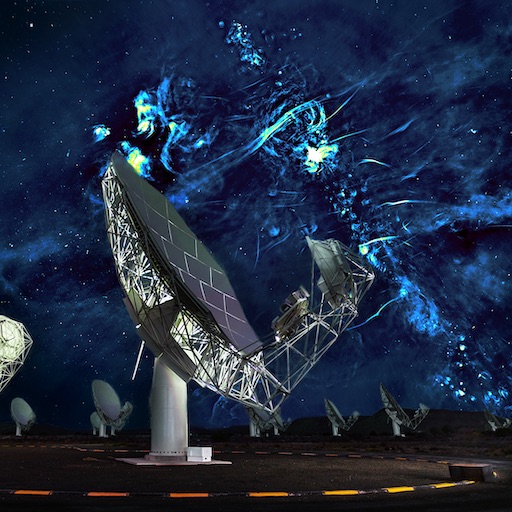
Opening up the radio sky with VLBI
Jack Radcliffe
University of Pretoria & University of Manchester
Friday 16 February 2024 14:00 CET
In the past few decades, radio surveys have provided us with unique insights into many areas of astrophysics such as star formation, supernovae, active galactic nuclei, pulsars, cosmology and much more. A key aspect of these surveys is the technique of Very Long Baseline Interferometry (VLBI) which can provide some of the highest resolutions possible in astronomy. This method has been crucial in understanding the inner workings of galaxies such as AGN-star-formation feedback, dark-matter substructures in gravitational lenses, and providing the first two direct images of a black hole shadow. VLBI has been typically limited where the largest surveys require many years of observations to build up an extensive sample. However, computational improvements have enabled us to map multiple sources within a single VLBI survey and push into the lower frequency regime through the International LOFAR telescope. In this talk, I will talk about the scientific and technical discoveries arising from such surveys and focus on the bright future of VLBI surveys. This includes the transition from the current modus operandi of a small number of surveys of a few 'famous' deep fields to a ubiquitous VLBI survey instrument. I will conclude the talk by talking about the upcoming developments in VLBI, such as the incorporation of SKA and MeerKAT, ultra-wideband receivers, and GPU-accelerated correlation and calibration.
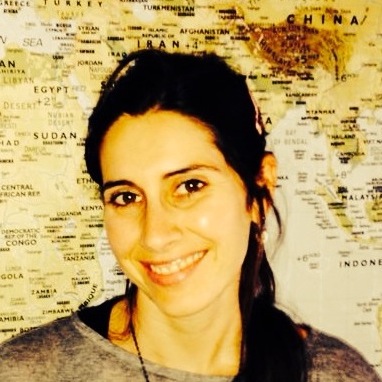
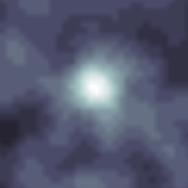
Intermediate-mass black holes in the era of radio astronomy
Mar Mezcua
Institute of Space Sciences (ICE-CSIC)
Thursday 5 May 2022 10:00 CEST
Black holes of 100–100,000 solar masses formed at redshifts of z < 20 are currently the best candidates to being the seeds of the first supermassive black holes that power the quasars detected at z ~ 6–7. Studying this population of high-redshift seeds has so far only been possible by investigating the possible local relics of those that did not become supermassive, which can be found in the local Universe as intermediate-mass black holes (IMBHs) in dwarf galaxies. I will show how radio interferometric observations have been key to identify and characterize actively accreting IMBHs in the local Universe and out to z ~ 3. The next generation of radio telescopes such as the SKA will open a new window on detecting seed black holes at birth, probing the formation pathways of the first quasars in the Universe.

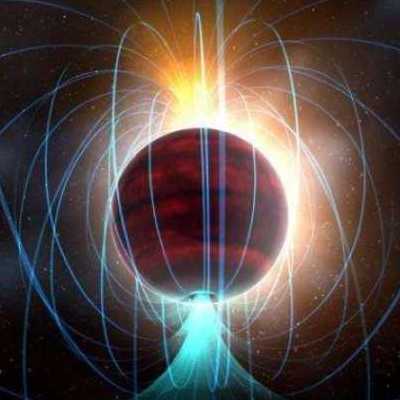
Exploring the lowest mass objects at the highest angular resolution: low-mass stars, ultracool dwarfs and exoplanets
Juan B. Climent
University of Valencia
Monday 14 March 2022 - 16:00 CET
At the very low mass regime of stellar and substellar objects, ultra-cool dwarfs (UCDs) cover the boundary between stars and exoplanets where radio observations have already proved the existence of powerful magnetic fields. Such observations are crucial not only to directly measure the strength and topology of the UCDs’ magnetic fields but also for opening a new route for the detection of exoplanetary radio emission, and hence, establishing a novel tool to discover new worlds. The great utility of radio observations is amplified in the case of binary systems as sub-mas astrometry can determine the dynamical masses. Despite this great potential, only a handful of VLBI observations of UCDs have been successful. In this talk, we will discuss the current state of the scientific knowledge regarding these topics while sharing our contributions: (i) multi-epoch multi-wavelength observations of a substellar triple system; (ii) new radio detections in several UCDs, including three binary low-mass systems, and, remarkably, a T6-object; and (iii) the sub-mas morphology of UCDs displaying auroral radio emission.

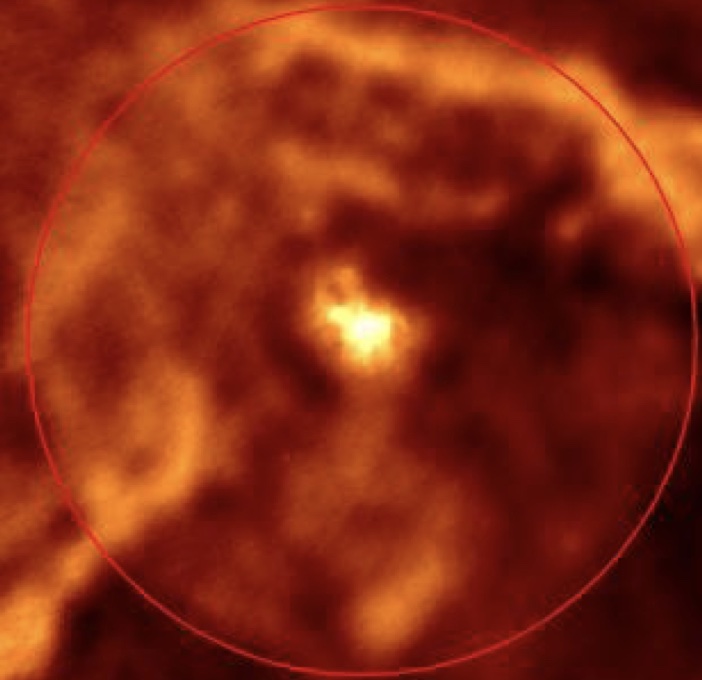
High resolution observations of magnetic fields in the Central Molecular Zone of the Galactic Center
Cornelia C. Lang
University of Iowa
Friday 28 January 2022 - 16:00 CET
In addition to harboring a supermassive black hole at its very core, the Galactic center is one of the most physically extreme environments in the Galaxy. Dense and massive molecular clouds on non-circular orbits are abundant in this region, yet star formation is not as active and frequent as expected. In addition, radio observations have revealed a population of synchrotron-emitting filaments that provide insight on the magnetic field strength and configuration in this unique region of the Galaxy. I will review observational results from several recent studies undertaken by my research group: we have examined the properties and kinematics of a group of unusual molecular clouds that appear to be part of an orbital “stream” of material around the Galactic center. In addition, we have been studying the detailed structure of the synchrotron-emitting radio filaments and their connection to larger-scale energetic outflows from the Galactic center. Our relative proximity to the Galactic center provides an unprecedented view of a galactic core and studies of this region can be used as an astrophysical analog to understanding the nuclei of more distant galaxies.

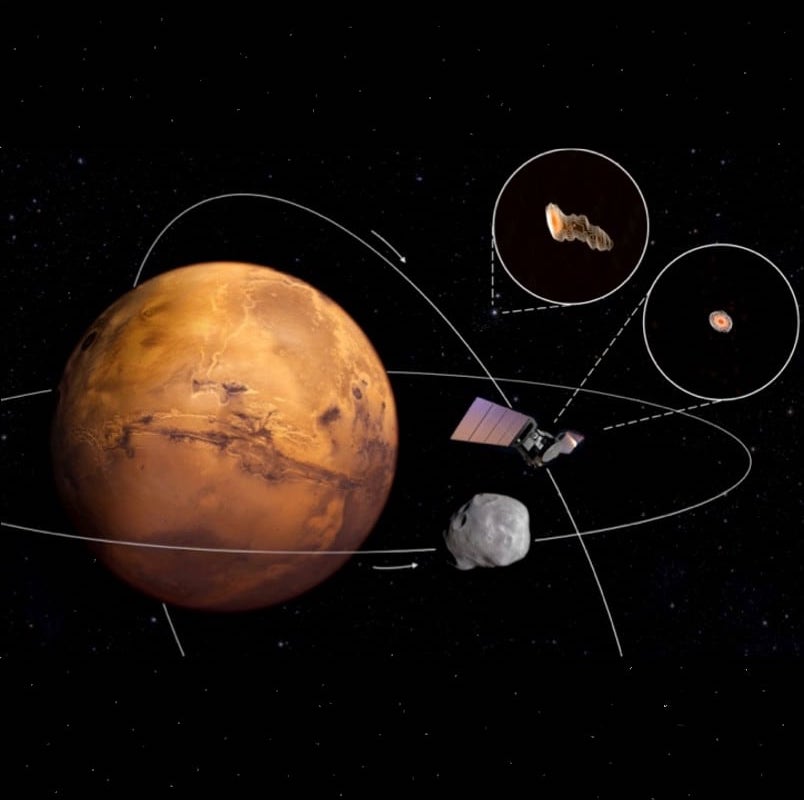
Observing interplanetary spacecraft with radio telescopes: connecting astronomers and space scientists
Giuseppe Cimò
Joint Institute for VLBI ERIC
Monday 29 November 2021 - 16:00 CET
Observations of human-made satellites using arrays of radio telescopes can provide the ultra-precise determination of their speed and their position on the celestial sphere. The Planetary Radio Interferometry and Doppler Experiment (PRIDE) is a technique that connects ground-based radio astronomy and space science to deliver the sharpest view of spacecraft in our solar system. PRIDE's precise determination of the lateral position of spacecraft can be used for a variety of scientific applications, including improvement of ephemerides, ultra-precise celestial mechanics of planetary systems, gravimetry, spacecraft orbit determination, and fundamental physics. Furthermore, observations of the radio signal transmitted by a spacecraft are an important source of information on interplanetary plasma and solar wind. In this talk, I will present novel results of observing ESA and NASA spacecraft with ground-based radio telescopes and demonstrate the capabilities of such a technique.

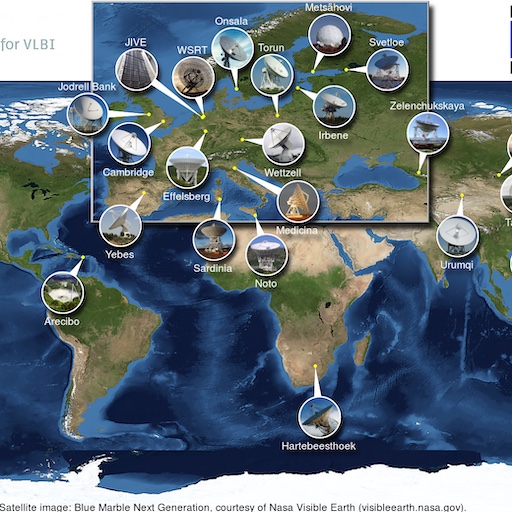
Tying the Sky to the Ground
Iván Martí-Vidal
University of Valencia
Friday 9 July 2021 - 15:00 CEST
The technique of Astronomical Interferometry allows us achieve the highest spatial resolutions in the observation of the Universe, thanks to the perfect coordination of different radiotelescopes spread across the Earth's surface. Besides the unbeatable spatial resolution, interferometry can also be used to estimate the locations of the sources on the sky, as well as the relative positions of the radiotelescopes, with precisions of a few tens of micro-arcseconds in the former and a few millimeters in the latter. In this talk, we will discuss about the use of interferometry techniques for high-precision Astrometry and Geodesy. We will review some key results and talk about on-going and future projects.

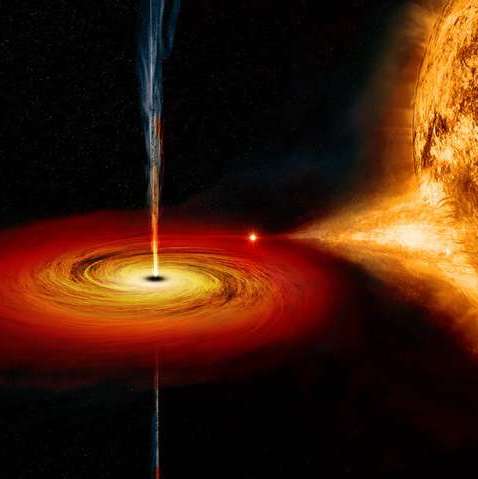
X-ray binaries unveiled by very high resolution radio imaging
Pikky Atri
ASTRON
Wednesday 9 June 2021 - 10:00 CEST
Accreting X-ray binaries are excellent laboratories to study extreme physics in our universe and provide unique opportunities to understand exotic neutron stars and black holes. It is thought that black hole X-ray binaries are small-scale Active Galactic Nuclei whose radio jets vary on human timescales. High-resolution radio imaging and astrometry are powerful tools that allow us to directly probe into the evolution of these jets. In this talk, I will review the study of compact X-ray binaries and how Very Long Baseline Interferometry is enabling exciting breakthroughs in understanding their birth, evolution and advancing the search for new X-ray binary systems.

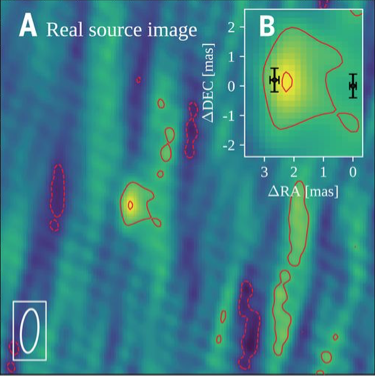
Re-solving multi-messenger puzzles with Very Long Baseline Interferometry
Marcello Giroletti
INAF - Instituto di Radioastronomia
Wednesday 19 May 2021 - 10:00 CEST
The detection of information carried by means other than electromagnetic waves has opened a new era in the study of the Universe. Very Long Baseline Interferometry, thanks to its exquisite angular resolution, remains the only technique allowing astronomers to directly image the most compact structures associated with the emission of energetic photons or other carriers of information, as well as their evolution. An outstanding example was the observation of the formation of a jet following the first - and so far unique - concurrent detection of gravitational and electromagnetic waves in GW 170817. In this talk, I will review the observational and astrophysical novelty of the VLBI campaign following this event, and the prospects for future synergies between VLBI and multi-messenger observations in the field of transient astrophysical sources.

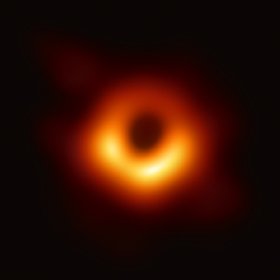
Shadows and Photon Rings: Imaging Supermassive Black Holes with the Event Horizon Telescope
Michael Johnson
Harvard-Smithsonian Center for Astrophysics
Monday 29 March 2021 - 16:00 CEST
The Event Horizon Telescope (EHT) uses very long baseline interferometry (VLBI) at 1.3-mm wavelength to produce images of supermassive black holes with horizon-scale resolution. I will discuss the breakthroughs that made these images possible and their implications for our understanding of supermassive black holes. I will also describe the emerging capabilities of the EHT to study relativistic dynamics of accretion flows and to elucidate the role of magnetic fields in jet launching. Finally, I will discuss the complex, fractal structure that is predicted to appear in higher resolution images of black holes, which enables a new type of radio interferometer capable of precision tests of General Relativity.
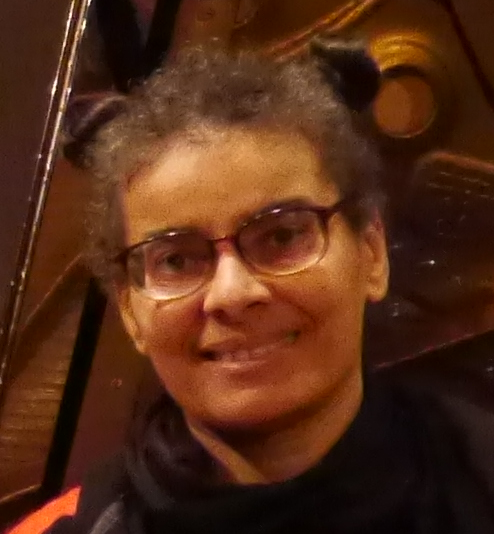
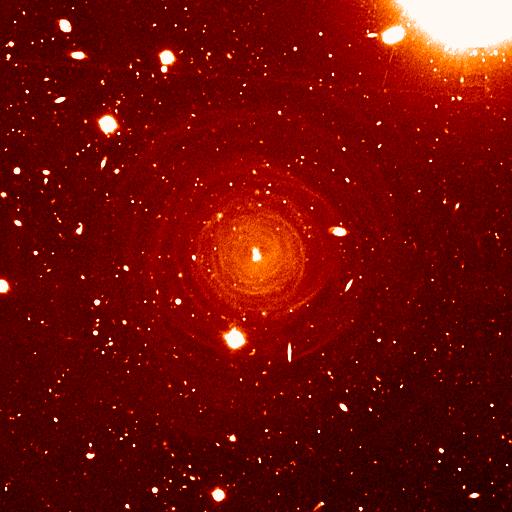
Distance of optically-obscured evolved stars
Sandra Etoka
Jodrell Bank Centre for Astrophysics & University of Manchester
Friday 5 February 2021 - 15:00 CET
As intermediate-mass stars head towards their final fate, they pass through the red-giant stage where they experience an increase of mass loss. This induces the creation of a circumstellar envelope of dust and gas. By the very end of this evolutionary stage, the amount of dust in the circumstellar envelope of a good fraction of these evolved stars is such that it blocks optical radiation, turning them into so-called OH/IR stars. These precursors of planetary nebulae are commonly observed throughout the Galaxy and are also observed in the Magellanic Clouds. Since optically thick, measurements of their distances using optical parallaxes as e.g. delivered by GAIA, is not possible. This issue can be circumvented thanks to maser emission. As their name gives it away, the physical conditions turn out to be ideal for a strong (1612-MHz) OH maser emission to be produced in the outer layers of the radially-expanding spherical circumstellar envelope of OH/IR stars. I will present how, combining single-dish monitoring and interferometric mapping of this OH maser emission, the "phase-lag method" allows us to measure their distance.

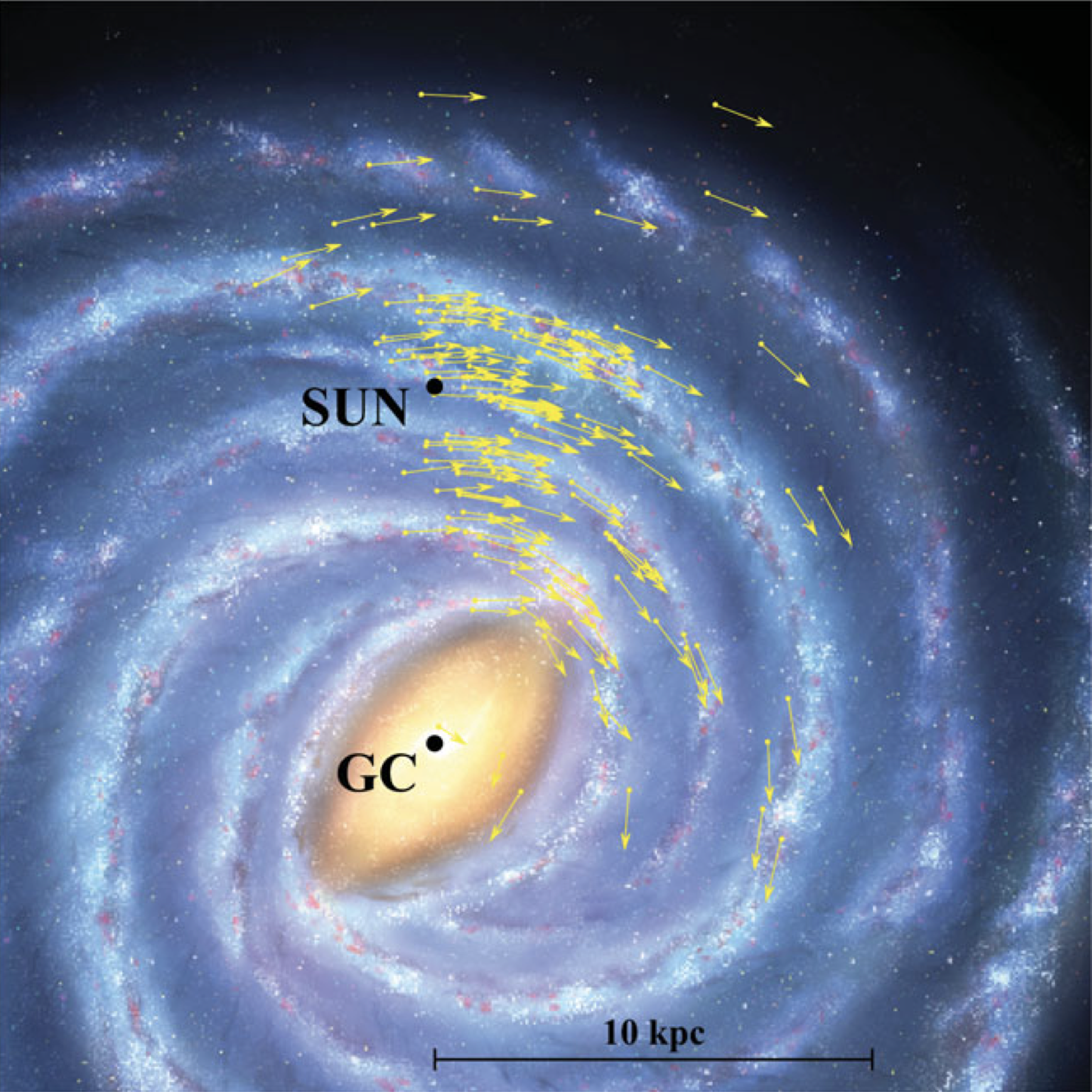
Galactic Maser Astrometry with Very Long Baseline Interferometry: Current Status and Beyond
Mareki Honma
National Astronomical Observatory of Japan
Wednesday 9 December 2020 - 10:00 CET
I will present the most recent results of high-resolution maser astrometry with Very Long Baseline Interferometry (VLBI). Maser astrometric surveys have been conducted with the Japanese VERA array and the Bar and Spiral Structure Legacy (BeSSeL) project, aimed at exploring the dynamic structure of the Milky Way. I will present recent results from these surveys, mainly covering topics on the determination of fundamental parameters, rotation curve measurement, tracing spiral structures, comparisons/calibrations of GAIA astrometry, and so on. I will also cover some topics related to individual maser sources (star forming regions and AGB stars) revealed by VLBI astrometry in combination with other arrays such as the Atacama Large Millimeter Array (ALMA). Finally, I will briefly discuss the future prospects of VLBI astrometry for forthcoming global VLBI in the SKA era.

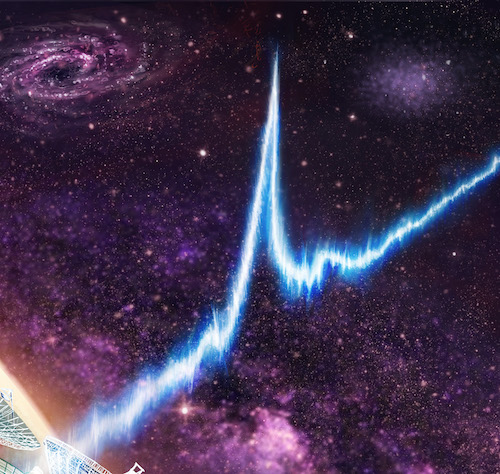
Pin-pointing the positions of repeating Fast Radio Bursts
Kenzie Nimmo
University of Amsterdam & ASTRON
Monday 19 October 2020 - 16:00 CEST
Fast radio bursts (FRBs) are bright pulses of coherent radio emission with durations of only a few milliseconds, and unknown extragalactic origin. Some FRBs have been observed to repeat, whereas others appear as one-off events. Currently it still remains unclear whether all FRB sources have the ability to repeat, or if there are multiple populations with different physical mechanisms. Recently, the Galactic magnetar SGR 1935+2154 emitted a very bright radio burst (orders of magnitude brighter than typical Galactic radio bursts from pulsars/magnetars) unveiling a bridge between Galactic sources of radio bursts and FRBs. With the European VLBI Network (EVN) we can precisely localise FRBs to milli-arcsecond precision, identifying not only the host galaxy, but the region within the host that the bursts are originating from. This will help in understanding the FRB progenitor(s) and how FRBs link to Galactic sources. In addition to the real-time correlation observing mode (e-EVN), baseband data can be buffered to study fine time and frequency structures of the bursts, as well as their polarisation properties. In this talk I will discuss our approach to localising repeating FRBs using the EVN, present the localisation of a second repeater, FRB 180619.J0158+65, and present recent results on SGR 1935+2154.

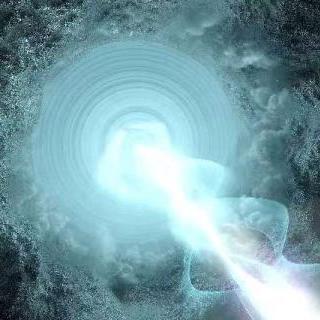
VLBI as a key to the origin of high-energy neutrinos
Yuri Kovalev
Astro Space Center
Friday 4 September 2020 - 14:00 CEST
Observational information on high-energy astrophysical neutrinos is being continuously collected by the IceCube observatory. However, the sources of the neutrinos are still unknown. We studied a large complete VLBI-selected sample of extragalactic radio sources and found that AGN positionally associated with IceCube events have typically stronger parsec-scale cores. Moreover, we see an increase of radio emission at frequencies above 10 GHz around neutrino arrival times. We conclude that AGNs with bright Doppler-boosted jets observed at small viewing angles constitute an important population of neutrino sources. High-energy neutrinos are produced in their central parsec-scale regions, probably in proton-photon interactions.


Using Strong Gravitational Lensing to Zoom in on High-Redshift Galaxies
Cristiana Spingola
University of Bologna & INAF - Istituto di Radioastronomia
Wednesday 8 July 2020 - 10:30 CEST
The centres of galaxies are powerful laboratories to test models of galaxy formation, as well as the interplay between supermassive black holes and their host galaxies. While these sub-galactic scales can be directly investigated in the local Universe, it is observationally extremely difficult to access them at high redshift. In this talk, we will exploit the combination of strong gravitational lensing and multi-wavelength high angular resolution observations to directly study the parsec scale emission in active galaxies at z > 1. The magnifying effect of strong lensing and the milliarcsecond angular resolution of HST, Keck AO and VLBI observations allow us to spatially resolve the central parts of distant lensed galaxies, especially if they are located in the regions at highest magnification. Therefore, it becomes possible to unveil dual and offset AGN candidates, but also faint extended jets embedded in massive molecular gas reservoirs at cosmological distances. Nevertheless, this kind of study is currently limited by the small number of radio-loud lensed sources. We will conclude by discussing the current efforts to search for more lensing systems in wide-field VLBI surveys.
Organising Committee
Benito Marcote
Joint Institute for VLBI ERIC
Anna Bartkiewicz
Institute of Astronomy, Nicolaus Copernicus University in Torun
Emmanuel Bempong-Manful
University of Manchester
Kazi Rygl
INAF - Istituto di Radioastronomia
Javier Moldón
Instituto de Astrofísica de Andalucía - CSIC
Former Organising Committee Members
Anna Bartkiewicz
Institute of Astronomy, Nicolaus Copernicus University in Torun
Denise Gabuzda
Department of Physics, University College Cork
Marcello Giroletti
INAF - Istituto di Radioastronomia
Miguel Pérez-Torres
Instituto de Astrofísica de Andalucía - CSIC
